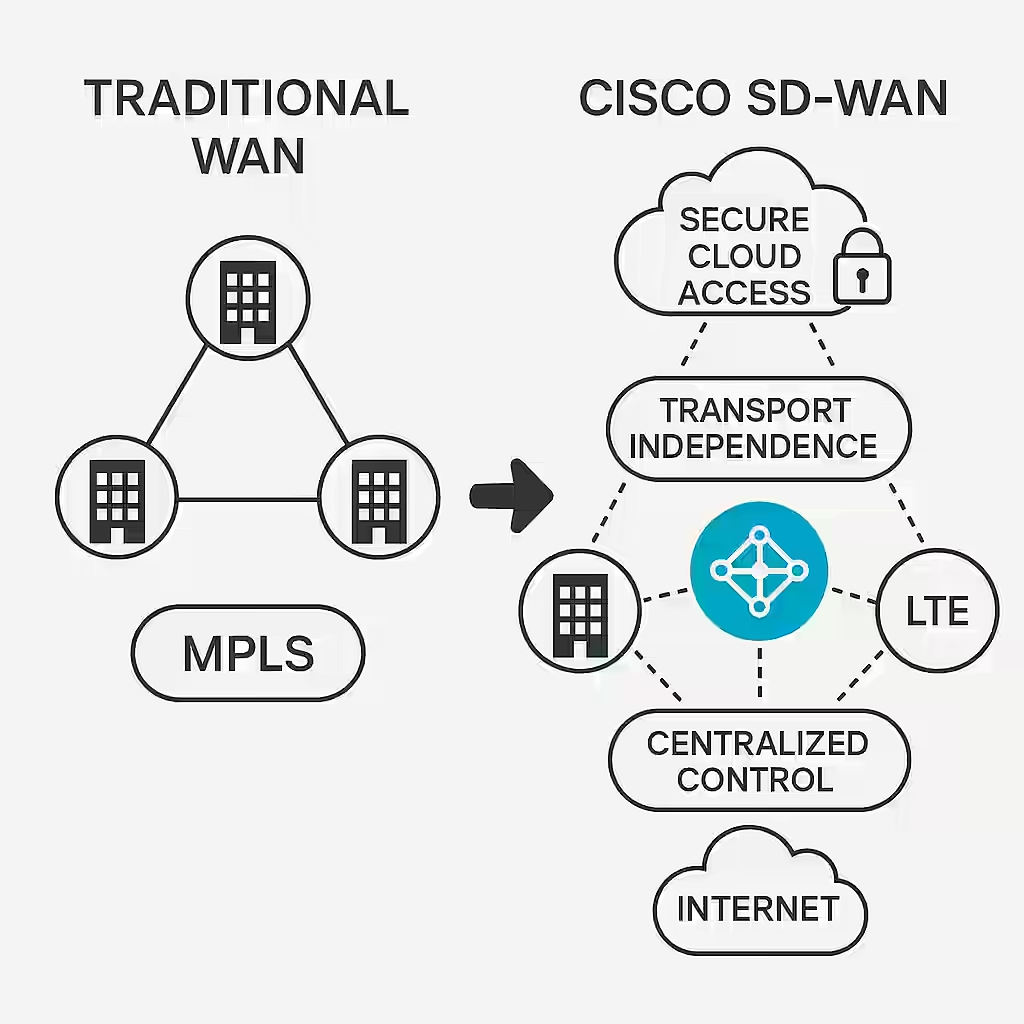The world of networking has undergone a dramatic transformation. In the past, Wide-Area Networks (WANs) were rigid, expensive, and complex—heavily dependent on MPLS circuits and static routing. Today, businesses face a new reality: cloud applications, a remote workforce, and evolving security threats. Enter Cisco SD-WAN, a game-changing technology that brings flexibility, agility, and intelligence to the WAN. Let’s explore how this modern approach is revolutionizing enterprise networking.
Imagine an enterprise with dozens, even hundreds of branches, each struggling to securely and efficiently connect to cloud applications and data centers. Traditional WANs simply can’t keep up with the demand for speed and reliability. Cisco SD-WAN changes the game by decoupling the control plane from the data plane, creating a powerful software-driven architecture. It introduces centralized management, making it easier to orchestrate traffic, enforce policies, and ensure optimal application performance.
But it’s not just about technology. It’s about solving real-world problems. With SD-WAN, businesses can finally achieve the elusive balance between cost and performance. MPLS costs are slashed, replaced by hybrid networks that use broadband and LTE, without compromising security. Critical applications are prioritized, so video calls don’t stutter, and cloud apps stay responsive.
A concept called “multidomain” ties it all together—integrating data centers, branches, and the cloud into a cohesive, secure network. This enables businesses to evolve without fear, leveraging a modern WAN that’s ready for anything.
Before deploying SD-WAN, it’s crucial to assess your current environment. What applications drive your business? How do you want to prioritize them? Are you ready to move from traditional MPLS-only networks to a hybrid approach that leverages multiple transports? Cisco SD-WAN delivers a direct internet access (DIA) capability that ensures cloud applications perform flawlessly, no matter where your users are. ROI becomes more than a buzzword; it’s a measurable outcome of reduced circuit costs and smarter traffic management.
Security remains paramount. Cisco SD-WAN encrypts data end-to-end and uses segmentation to keep sensitive data safe. This is a WAN built for a cloud-first world.
Let’s look at a command that becomes essential in SD-WAN implementation:
show sdwan control connectionsThis command verifies the control connections between SD-WAN devices (like vEdge or cEdge routers) and the controllers, ensuring the architecture is working as designed.
- What challenge does Cisco SD-WAN solve for modern businesses?
Answer: It addresses the need for secure, flexible, and efficient WAN connectivity for cloud apps and remote users. - What does “transport independence” allow?
Answer: It allows the use of multiple transport types (MPLS, LTE, broadband) seamlessly. - Why is centralized management so critical in SD-WAN?
Answer: It simplifies policy enforcement and traffic orchestration across a complex network. - What’s the primary security feature built into SD-WAN?
Answer: End-to-end encryption and segmentation. - What is the role of “multidomain” in SD-WAN?
Answer: It unifies data center, branch, and cloud connectivity into a single, secure architecture.
